#karlya shelton-benjamin
Photo
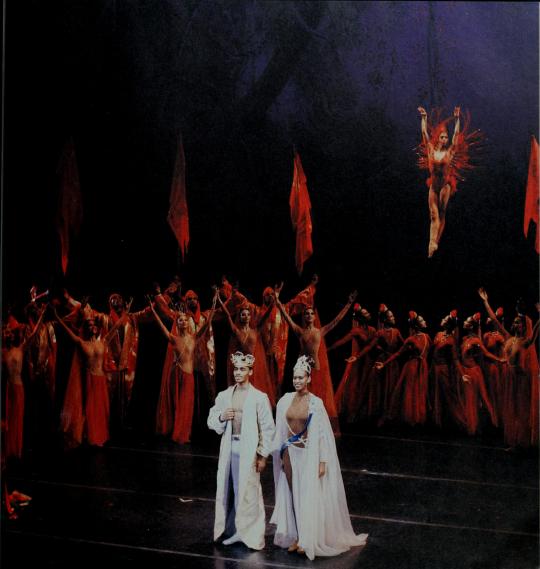
donald williams, lorraine graves, stephanie dabney with theara ward, laurie woodward, leslie woodward, carol crawford smith, linda swayze, melanie person, karen brown, judy tyrus, julie felix, karlya shelton-benjamin, cassandra phifer, yvonne hall, and the rest of the artists photographed performing as prince ivan, the princess of unreal beauty, the firebird, and beautiful maidens in john taras’ the firebird by jack vartoogian
#ballet#ballerino#ballerina#donald williams#lorraine graves#stephanie dabney#theara ward#laurie woodward#leslie woodward#carol crawford smith#linda swayze#melanie person#karen brown#judy tyrus#julie felix#karlya shelton-benjamin#cassandra phifer#yvonne hall#jack vartoogian
23 notes
·
View notes
Photo

karlya shelton-benjamin photographed rehearsing as a swan for swan lake by anthony barboza
3K notes
·
View notes
Photo
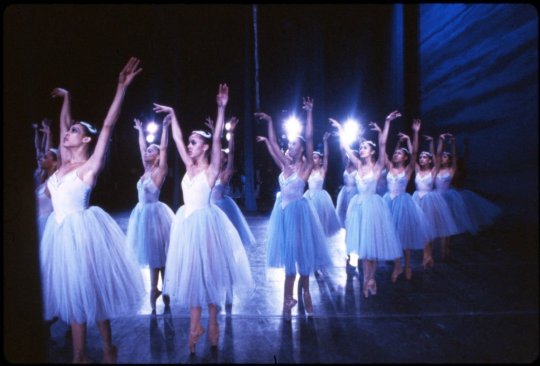

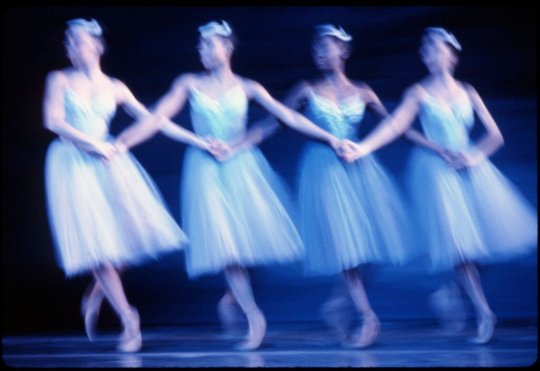
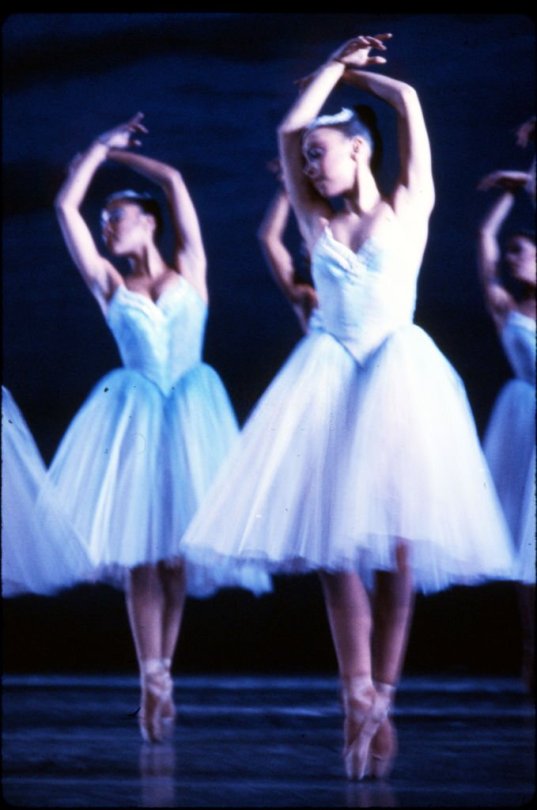
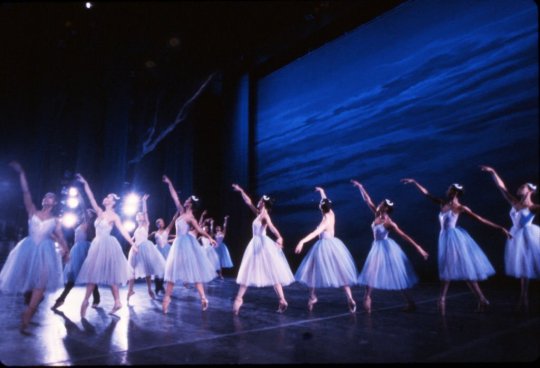


judy tyrus, yvonne hall, elena carter richardson, karlya shelton-benjamin, terri tompkins, and the rest of the unidentified dth artists photographed performing as swans in swan lake act ii ~dress rehearsal~ by anthony barboza
#ballet#ballerina#judy tyrus#yvonne hall#elena carter richardson#karlya shelton-benjamin#terri tompkins#anthony barboza#unidentified artists#swan lake
57 notes
·
View notes
Photo

judy tyrus, karlya shelton-benjamin, yvonne hall, and terri tompkins photographed as swans in swan lake by martha swope
#ballet#ballerina#judy tyrus#karlya shelton-benjamin#yvonne hall#terri tompkins#swan lake#martha swope
616 notes
·
View notes
Photo

karlya shelton-benjamin, joseph wyatt, judy tyrus, and the rest of the artists photographed during a rehearsal of pas de dix by anthony barboza
33 notes
·
View notes
Photo

unidentified dth artists, judy tyrus, yvonne hall, elena carter richardson, karlya shelton-benjamin, and theara ward photographed performing as swans in swan lake act ii by jack vartoogian
#ballet#ballerina#judy tyrus#yvonne hall#elena carter richardson#karlya shelton-benjamin#theara ward#jack vartoogian#swan lake#unidentified artists
34 notes
·
View notes
Photo
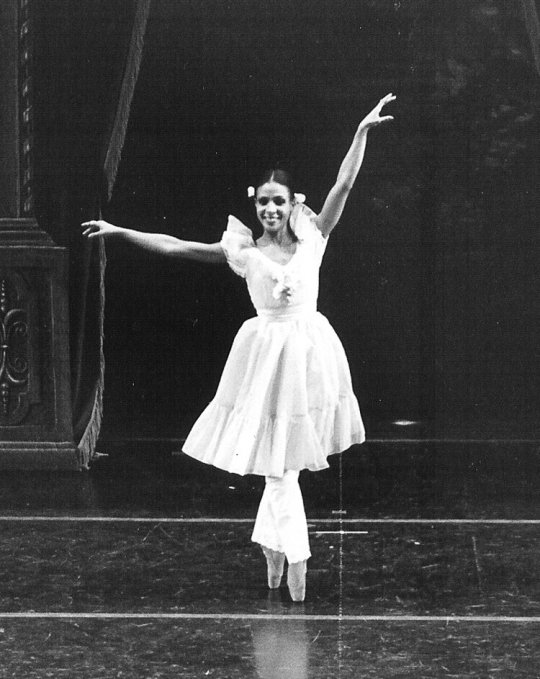
karlya shelton-benjamin photographed in david lichine’s graduation ball by jack vartoogian
67 notes
·
View notes
Photo

karlya shelton-benjamin photographed by lois greenfield
93 notes
·
View notes
Photo
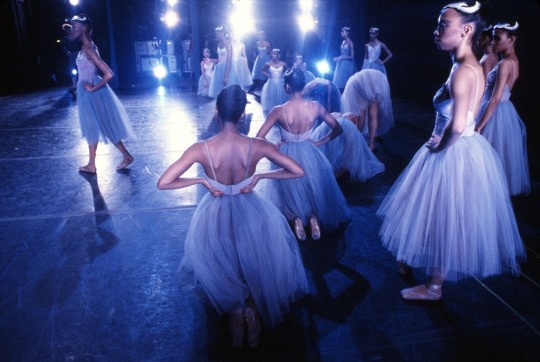



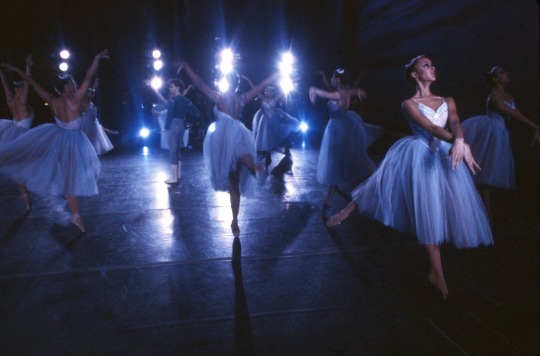



judy tyrus, yvonne hall, elena carter richardson, karlya shelton-benjamin, terri tompkins, and the rest of the dance theatre of harlem artists photographed rehearsing as swans in swan lake act ii by anthony barboza
#ballet#ballerina#judy tyrus#yvonne hall#elena carter richardson#karlya shelton-benjamin#terri tompkins#anthony barboza#swan lake#unidentified artists
168 notes
·
View notes
Photo

joseph wyatt, elena carter richardson, and the rest of the artists (stephanie dabney, judy tyrus, yvonne hall, karen brown, melanie person, karlya shelton-benjamin) photographed performing in paquita by jack vartoogian
#joseph wyatt#elena carter richardson#ballet#ballerino#ballerina#jack vartoogian#stephanie dabney#judy tyrus#yvonne hall#karen brown#melanie person#karlya shelton-benjamin
25 notes
·
View notes
Photo

donald williams, lorraine graves, stephanie dabney with theara ward, laurie woodward, leslie woodward, carol crawford smith, linda swayze, melanie person, karen brown, judy tyrus, julie felix, karlya shelton-benjamin, cassandra phifer, yvonne hall, and the rest of the artists photographed performing as prince ivan, the princess of unreal beauty, the firebird, and beautiful maidens in john taras’ the firebird by jack vartoogian
#ballet#ballerino#ballerina#donald williams#lorraine graves#stephanie dabney#theara ward#laurie woodward#leslie woodward#carol crawford smith#linda swayze#melanie person#karen brown#judy tyrus#julie felix#karlya shelton-benjamin#cassandra phifer#yvonne hall#jack vartoogian
10 notes
·
View notes
Photo


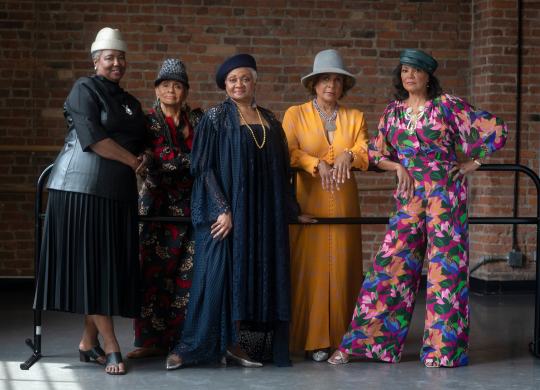

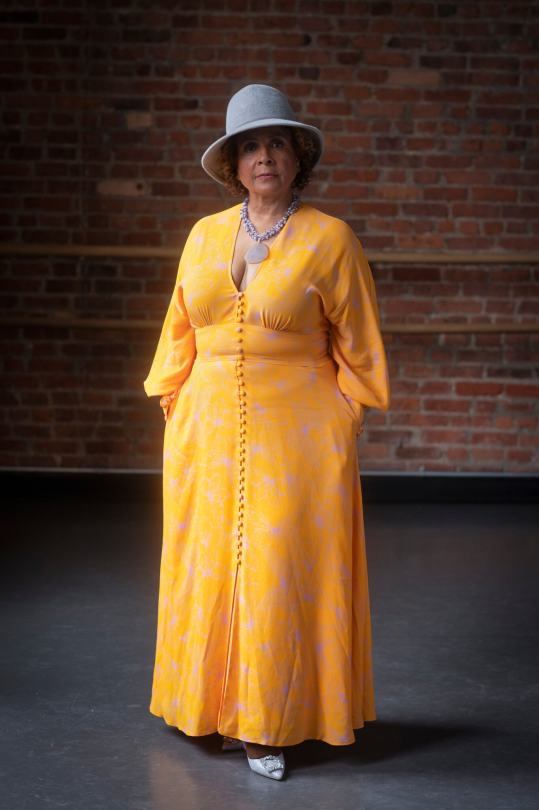

marcia sells, sheila rohan, gayle mckinney griffith, karlya shelton-benjamin, and lydia abarca photographed for the new york times by delphine diallo
#ballet#ballerina#marcia sells#sheila rohan#gayle mckinney griffith#karlya shelton-benjamin#lydia abarca#delphine diallo#the ny times
36 notes
·
View notes
Photo

karen brown, lorraine graves, karlya shelton-benjamin, judy tyrus, stephanie dabney, and yvonne hall photographed performing in arthur mitchell’s holberg suite by marbeth
#ballet#ballerina#karen brown#lorraine graves#karlya shelton-benjamin#judy tyrus#stephanie dabney#yvonne hall#marbeth
19 notes
·
View notes
Link
Article: Five Pioneering Black Ballerinas: ‘We Have to Have a Voice’
Date: June 17, 2021
By: Karen Valby
These early Dance Theater of Harlem stars met weekly on Zoom — to survive the isolation of the pandemic and to reclaim their role in dance history.
Last May, adrift in a suddenly untethered world, five former ballerinas came together to form the 152nd Street Black Ballet Legacy. Every Tuesday afternoon, they logged onto Zoom from around the country to remember their time together performing with Dance Theater of Harlem, feeling that magical turn in early audiences from skepticism to awe.
Life as a pioneer, life in a pandemic: They have been friends for over half a century, and have held each other up through far harder times than this last disorienting year. When people reached for all manners of comfort, something to give purpose or a shape to the days, these five women turned to their shared past.
In their cozy, rambling weekly Zoom meetings, punctuated by peals of laughter and occasional tears, they revisited the fabulousness of their former lives. With the background of George Floyd’s murder and a pandemic disproportionately affecting the Black community, the women set their sights on tackling another injustice. They wanted to reinscribe the struggles and feats of those early years at Dance Theater of Harlem into a cultural narrative that seems so often to cast Black excellence aside.
“There’s been so much of African American history that’s been denied or pushed to the back,” said Karlya Shelton-Benjamin, 64, who first brought the idea of a legacy council to the other women. “We have to have a voice.”
They knew as young ballet students that they’d never be chosen for roles like Clara in “The Nutcracker” or Odette/Odile in “Swan Lake.” They were told by their teachers to switch to modern dance or to aim for the Alvin Ailey company if they wanted to dance professionally, regardless of whether they felt most alive en pointe.
Arthur Mitchell was like a lighthouse to the women. Mitchell, the first Black principal dancer at the New York City Ballet and a protégé of the choreographer George Balanchine, had a mission: to create a home for Black dancers to achieve heights of excellence unencumbered by ignorance or tradition. Ignited by the assassination of the Rev. Dr. Martin Luther King Jr., he founded Dance Theater of Harlem in 1969 with Karel Shook.
Lydia Abarca-Mitchell, Gayle McKinney-Griffith and Sheila Rohan were founding dancers of his new company with McKinney-Griffith, 71, soon taking on the role of its first ballet mistress. Within the decade, Shelton-Benjamin and Marcia Sells joined as first generation dancers.
Abarca-Mitchell, 70, spent her childhood in joyless ballet classes but never saw an actual performance until she was 17 at the invitation of Mitchell, her new teacher. “I’ll never forget what Arthur did onstage” she said of his Puck in “A Midsummer Night’s Dream” at New York City Ballet during a Tuesday session in January. “He made the ballet so natural. Suddenly it wasn’t just this ethereal thing anymore. I felt it in my bones.”
Marcia Sells, 61, remembered being 9 and watching with mouth agape when Abarca-Mitchell, McKinney-Griffith and Rohan performed with Dance Theater in her hometown, Cincinnati. “There in front of me were Black ballerinas,” Sells said during a video call in April. “That moment was the difference in my life. Otherwise I don’t think it would’ve been possible for me to think of a career in ballet.”
Shelton-Benjamin left her Denver ballet company, where she was the only Black dancer, turning down invitations from the Joffrey Ballet and American Ballet Theater, after reading a story about Dance Theater of Harlem in Dance magazine. Abarca-Mitchell was on that issue’s cover — the first Black woman to have that honor. At her Harlem audition, Shelton-Benjamin witnessed company members hand-dying their shoes and ribbons and tights to match the hues of their skin. Here, no traditional ballet pink would interrupt the beauty of their lines. “I had never seen a Black ballerina before, let alone a whole company,” Shelton-Benjamin, 64, said during a February Zoom meeting. “All I could think was, ‘Where have you guys been?’”
Finding one another back then, at the height of the civil rights movement, allowed them to have careers while challenging a ballet culture that had been claimed by white people. “We were suddenly ambassadors,” Abarca-Mitchell said. “And we were all in it together.”
They traveled to American cities that presented such a hostile environment that Mitchell would cancel the performance the night of, lest his company feel disrespected. But they also danced for kings and queens and presidents. In 1979, a review in The Washington Post declared their dancing to be a “purer realization of the Balanchinean ideal than anyone else’s.” Their adventures offstage were similarly electric, like the night in Manchester when Mick Jagger invited them out on the town. “We walked into the club with him and everybody just moved out of the way,” Shelton-Benjamin said.
Cultural memory can be spurious and shortsighted. Abarca-Mitchell was the first Black prima ballerina for a major company, performing works like Balanchine’s “Agon” and “Bugaku” and William Dollar’s “Le Combat” to raves. In an April Zoom session she said she first realized how left out of history she was when her daughter went online to prove to a friend that her mother was the first Black prima ballerina. But all she found was the name Misty Copeland, hailed as the first. “And my daughter was so mad. She said: ‘Where’s your name? Where’s your name?’ It was a wake-up call.”
While Abarca-Mitchell paused to wipe her eyes, Shelton-Banjamin stepped in: “I want to echo what Lydia said. There was a point where I asked the women, ‘Did it all really happen? Was I really a principal dancer?’ And Lydia told me: ‘Don’t do that! Yes, you were. We’re here to tell you, you were.”
Sells went on to a career that included serving as the dean of Harvard Law School, until she left this year to become the Metropolitan Opera’s first chief diversity officer. Shelton-Benjamin is now a jeweler who recently became certified in diamond grading. She, along with Abarca-Mitchell, McKinney-Griffith and Rohan, continue to coach and teach dance. They all have families, including another grandchild on the way for McKinney-Griffith, who announced the happy news to whoops on a recent call.
But they are done swallowing a mythology of firstness that excludes them, along with fellow pioneers like Katherine Dunham, Debra Austin, Raven Wilkinson, Lauren Anderson and Aesha Ash. It’s true that Misty Copeland is American Ballet Theater’s first Black female principal. It is also true that she stands on the shoulders of the founding and first generation dancers at Dance Theater. A narrative that suggests otherwise, Sells said, “Simply makes ballet history weak and small.”
Worse, it perpetuates the belief that Blackness in ballet is a one-off rather than a continuing fact. And it suggests a lonely existence for dancers like Copeland, a world absent of peers. “We could’ve been Misty’s aunties,” Abarca-Mitchell said. “I wish she was part of our sisterhood, that’s all.”
Dance Theater saved them from being the only one in a room. The work was so hard, the expectations so high, the mission so urgent, that those early days demanded a familial support system among the dancers. “Someone would take you under their wing and say, ‘You’re my daughter or sister or brother,’” McKinney-Griffith said. “The men did it also. Karlya was my little sister, and we kept that through the years.”
Like in any family, the relationships are complicated. The women speak of feeling shut out of today’s Dance Theater of Harlem. They are rarely brought in for workshops or consultations on the ballets they were taught by Mitchell. At his memorial service in 2018, they wept in the pews unacknowledged. “We’re like orphans,” Rohan said with a laugh in a Zoom session. “If the outside world neglects us, it seems all the more reason that Dance Theater of Harlem should embrace us.”
Virginia Johnson, a fellow founding member, is now the company’s artistic director. She assumed the helm in 2013 when Dance Theater returned after an eight-year hiatus caused by financial instability. “It makes me sad to think that they feel excluded,” Johnson said in a phone interview. “And it’s not because I don’t want them. It’s just because I can’t manage. I’ve probably missed some chances but it’s not like I haven’t thought about the value of what they bring to the company. They are the bodies, the soul, the spirit of Dance Theater of Harlem.”
“We all think about and love and respect what Arthur Mitchell did,” she added, “but these are the people he worked with to make this company.”
By the end of May, the five members of the 152nd Street Black Ballet Legacy were fully vaccinated. They traveled from Denver, Atlanta, Connecticut, South Jersey and, in Sells’s case, five blocks north of Dance Theater of Harlem for a joyful reunion. So much is different now at the building on 152nd Street. The old fire escape in Studio 3 where they’d catch their breath or wipe tears of frustration is gone. So are the big industrial fans in the corners of the room, replaced by central air conditioning. But they can still feel their leader all around them in the room. Crying, Abarca-Mitchell told McKinney-Griffith, “I miss Arthur.” (Though they all laugh when imagining his response to their legacy council. “I do believe he would try to control us,” Rohan said. “’What are you doing now? Why are you doing that? Let me suggest that. …’”)
The body remembers. In Studio 3, all Shelton-Benjamin had to do was hum a few notes of Balanchine’s “Serenade” and say “and” for the women to grandly sweep their right arms up. “These women help validate my worth,” Abarca-Mitchell said afterward. “I don’t want to take it for granted that people should recognize Lydia Abarca. But when I’m with them I feel like I felt back then. Important.”
Even as the world reopens and they grow busy again, they’ll carry on with their Tuesday afternoons. They want to amplify more alumni voices. They dream of launching a scholarship program for young dancers of color. This fall, they’ll host a webinar in honor of the director and choreographer Billy Wilson, whose daughter Alexis was also part of Dance Theater.
“What we have is a spiritual connection,” said Rohan, who turns 80 this year. She was 27 when she joined the company, already married and hiding from Mitchell that she was a mother of three young children for fear it get her kicked out. When she eventually confessed a year later, he got mad, insisting he would have increased her salary if he’d known she had mouths to feed.
“Arthur planted a seed in me, and all these beautiful women helped it grow,” she said. “Coming from Staten Island, I was just a country girl from the projects. My first time on a plane was to go to Europe to dance on those stages. I thanked God every day for the experience. This year, coming together again, I remembered how much it all meant to me. I didn’t have to be a star ballerina. It was enough that I was there. I was there. I was there.”
#article#ballet#the ny times#marcia sells#sheila rohan#gayle mckinney griffith#karlya shelton-benjamin#lydia abarca#virginia johnson
46 notes
·
View notes
Photo

lydia abarca, karen brown, stephanie dabney, brenda garrett-glassman, yvonne hall, joyce handy, virginia johnson, susan lovelle, denise nix, ronda sampson, marcia sells, karlya shelton-benjamin, melva murray-white, and mel tomlinson photographed performing in geoffrey holder’s dougla by marbeth
#ballet#ballerina#ballerino#lydia abarca#karen brown#stephanie dabney#brenda garrett-glassman#yvonne hall#joyce handy#virginia johnson#susan lovelle#denise nix#ronda sampson#marcia sells#karlya shelton-benjamin#melva murray-white#mel tomlinson#marbeth
35 notes
·
View notes
